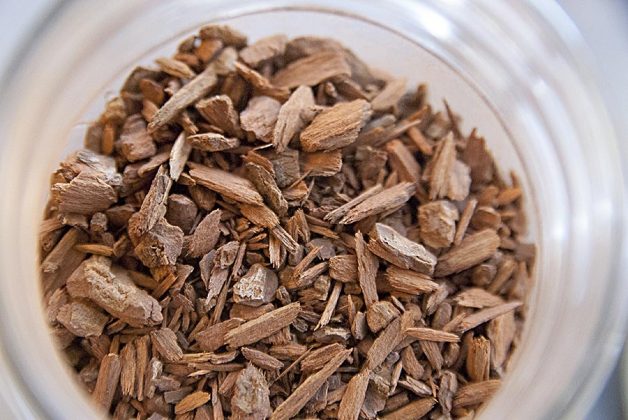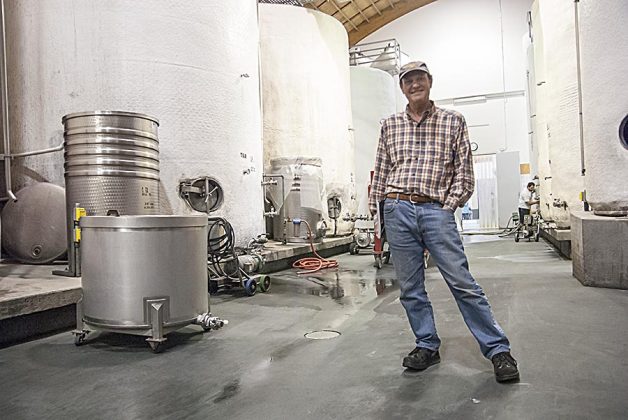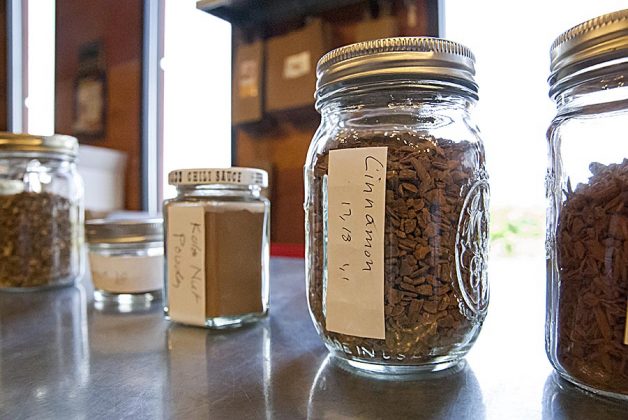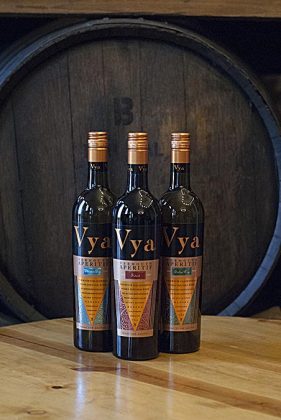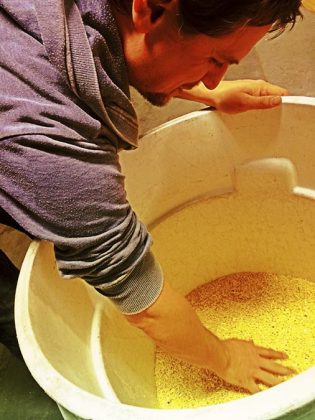What?
Hair tonic? Yes, historically speaking, you would apply some vermouth to your scalp if you have problems with your hair. Vermouth is a noun derived from the German word wermut, or wormwood. Medicinal herbs, one of which is wormwood, are contained in vermouth. Wormwood is known to help rid your hair from head lice. Wormwood was also used as a cure for stomach worms. Worms? Where are these worms? Are there worms in my belly? Wormwood?
If you grew up during the 16th century, earlier or later, you almost certainly would have had worms growing in your belly. You also would have fleas and possibly even lice living on your head. This was the way of things before electricity gave us both refrigeration against food poisoning and shampoo against head lice. Nice!
Traditionally, vermouth was made with wormwood as the active ingredient. This herb was highly beneficial from a holistic/folk-healing standpoint as a medicinal against infestations of the body.
Many of our modern aperitifs and digestives had multiple purposes over their history. Vermouth was but one of the liquors that were originally used for one type of digestive or circulatory distress or other ailments. Fernet Branca? Invented as a stomach curative. Zwack? Again, this powerful, root and herbal-based liqueur was created to sooth maladies of the belly. Campari? Did you really think it was invented to get Count Negroni drunk? He may have had a bellyache from food poisoning. That’s much more plausible.
Vermouth is a creative and inspired offshoot of the wine industry but is far from the pretentiousness that follows the wine world. Wine, once uncorked, has a very limited life and must be enjoyed quickly. Add herbs, roots, spices and fortify with alcohol, and what you have at the end of the day is something elegant, yet fun, … called vermouth.
Vermouth may well have slipped into obscurity if it wasn’t for the way that it complements the appreciation of food and calms digestion. What is vermouth? Vermouth is brightly flavored aromatic wine that has been treated with spices, herbs and roots of various intensities. Though it is fortified, it is not distilled.
In the United States, there is a resurgence of vermouth as more than just a metaphor for drinking lighter. What vermouth represents to the drinker is passion, sip by sip. Vermouth is both slightly bitter and slightly sweet across the tongue, offering acidity, terroir and emotion. What vermouth represents in the modern American vernacular is both flavor and mixability. It is not just an afterthought ingredient in a dull and listless Rob Roy or a flaccid Manhattan. You can do so much with vermouth in cocktails.
It has come a long, long way since Martini and Rossi was served “on the rocks with a twist,” as my father would drink it. I remember traveling to Europe in the 60’s and 70’s and every meal would begin with some kind of apéritif. Sweet/red vermouth, such as Carpano Antica (when in Italy), was a typical way to start a meal because, as my parents explained to me, it stimulated the appetite and also put it to bed at night. Although I didn’t take note at the time, the flavors of my childhood surrounded themselves not around beer — which was always plentiful — but with vermouth.
In present day Spain, vermouth is part of the daily social thread. They serve vermouth (vermut) with fizzy water, garnishing it with not only the usual orange slice but with anchovy-stuffed olives as well. The sweet bite of the vermouth is tempered by the briny clarity of the green olive, revealing the salinity of the anchovy, and a burst of acidity from the orange.
It’s an experience to touch on, again and again. This is why we drink vermouth. It sparks our appetites and imaginations.
At home in the United States there is a new age of vermouth around us. We are finding new and clearly different versions from the classic European vermouth mold. Some have wormwood, others don’t. It’s up to the creator of the recipe to decide what the proprietary ingredients will be.
Uncouth Vermouth (www.uncouthvermouth.com) created by Bianca Miraglia in Brooklyn, NY, contains all hand-foraged ingredients. She is individualistic and her vermouth, made without wormwood, is decidedly different in texture from all others. The brilliant vermouth that comes from Vya (www.vya.com), produced just outside of Fresno, CA, or even the restrained and sumptuous vermouth named Imbue (imbuecellars.com), from the Willamette Valley in Oregon, are all worthy of your hard-earned dollars. Atsby Vermouth’s (atsbyvermouth.com), from New York City, offers two expressions; their dazzlingly-restrained effort known as Amberthorn is decidedly altered from their chewy and euro-styled, Armadillo Cake.
There are many preconceived notions of old-fashioned Euro vermouth when concocting craft cocktails with these modern-style efforts in the genre. If you are looking to free up your imagination and tantalize your palate, be prepared to treat it to some really interesting combinations of flavors. Get to your favorite liquor store and implore the buyer to find you Atsby, Uncouth, Vya, Channing Daughters’ three variations of VerVino (www.channingdaughters.com), Imbue, or any from the new wave of vermouths.
I asked some questions about what vermouth means and a couple of questions to some of the leaders of modern-styled vermouth made here in the USA.
Question One: Why Vermouth?
Bianca Miraglia (Uncouth Vermouth, Brooklyn): “Vermouth combines my love of wine with my undying curiosity of the forest. Every step of creating this potion is magical, as though something within me is in control and my body is nature’s puppet. I never have any idea what I’m doing and I hope it stays that way forever.”
Christopher Tracy (Channing Daughters, Bridgehampton, NY): “Why not vermouth! It is delicious and another way for us to tell the story of our place/our terroir, not only through our wine, but also through other aromatic botanicals. This is particularly interesting by producing the five variations that walk you through the seasons with the different botanicals specific to those seasons.”
Neil Kopplin (Imbue Vermouth, Oregon): “Well… I’ve always had a soft spot in my heart for the kid on the playground that got picked on. Vermouth had always been that kind of product. Always misunderstood, aggressive, polarizing, and sometimes unfriendly to the masses, but overall a very complex and unmistakably interesting product. I felt that if we could make something that would change people’s minds about vermouth… people would remember us. So that was the goal, to break down the individual components and inject something truly unique and crafty into a market saturated with tired brands.”
Andrew Quady (Vya Vermouth, Madera, CA): “Vermouth is a winemaking challenge. The category is misunderstood and has potential for major growth.”
Adam Ford (Atsby Vermouth, NY, NY): “I had just returned from a trip to Italy, and during the trip I had a chance to taste some local Italian vermouth. This blew my mind. It was the coolest drink I had ever tasted. What I wanted to do was to return vermouth to its original glory in America.”
Question Two: What goes well with vermouth?
Adam Ford (Atsby Vermouth): “This question really could be what kind of cocktail isn’t great with vermouth. Vermouth, of course, is largely, if not entirely responsible for cocktail culture as we know it in the United States and around the world. Prior to Vermouth arriving in New York in the 1860s, cocktails were rough, harsh affairs lacking the complexity, balance, and harmony we now come to expect in a properly mixed cocktail. It quickly became known as the ‘wonder ingredient’ (so coined by cocktail historian David Wondrich) that moved cocktails out of the stone ages and into modernity.”
Neil Kopplin (Imbue Vermouth): “Try the plain old V&T. Vermouth and tonic with a squeeze of orange is my favorite. Truly delicious, easy for ANYONE to execute and it’s a bright refresher to the palate. Of course, there is also the often-abused ‘Martini.’ People forget that the Martini is an actual cocktail. Not just the name you put on the end of the name of another drink to signify that it comes: Straight Up.”
Christopher Tracy (Channing Daughters): “What isn’t… right? Well almost, but… how many great cocktails in history have been made with vermouth or other fortified aromatized wines? There are new ones all the time, not to mention it is awesome by itself. Vermouth is great on the rocks, with a twist, a spritz and mixed with so many things.”
Bianca Miraglia (Uncouth): “Bitter cocktails are best for vermouth. A sweet cocktail masks the complexities and a sour only emphasizes a small fraction of characteristics. In general, we need to be truly paying attention to every ingredient and stop substituting one man’s work for another; as though each gin is the same, for example. It’s also very important to keep in mind vermouth is an apéritif and not a ‘mixer.’ When putting vermouth, only weighing in around 15-20% alcohol, up against a 40-50% spirit, keep in mind proper ratios to achieve the best results.”
Andrew Quady (Vya Vermouth): “All vermouth cocktails can be wonderful, as well as Manhattans, Negronis and many others in which vermouth plays an important role.”
Question Three: In a sentence or two say something about your inspiration for craft vermouth.
Bianca Miraglia (Uncouth Vermouth): “I love waking up every morning and staring at an endless ceiling. I’ll never have to stop celebrating batch and bottle variation for the sake of ‘consistency.’”
Neil Kopplin (Imbue Vermouth): “Well, I was inspired by the challenge. The craft indicator isn’t always an advantage. You often feel like a little fish in an ocean of sharks. I think most people in the craft spirits industry fight best when they are outnumbered and outsized. This is a business as well as a craft. Those who understand both, understand that it’s about weathering storm after storm, until you get to a place where the tides are manageable, the feeding frenzy is over and you can learn to swim with the other fishes in your pod.”
Christopher Tracy (Channing Daughters): “It was more inspiration of aromatized and fortified wines. Since when we look back, there was more often than not aromatization and then later also fortification of wine produced throughout history. There is a grand tradition of wine producers making vermouth, and not just overseas but domestically, and vermouth was huge in New York a century ago. That we now find connections to the craft spirits world is so cool and one we did not really imagine, but we love it…”
Adam Ford (Atsby Vermouth): “I do a lot of talking about the proper role that drinking should play in our lives. I think my college days would have been a lot better, had I the confidence to go to a bar and simply order a glass of vermouth, and then a classic cocktail, like a Manhattan, made with two parts vermouth to one part rye. Of course, back then, none of this existed and so it wouldn’t have been possible. But it is now.”
Cocktail Whisperer-Style Negroni
Over the hundreds of years prior to becoming an essential ingredient in many cocktails, vermouth has undergone many incarnations. This would include vermouth as a powerful folk medicine for whatever ails ye! Sure, if I have an itch, I can rub any kind of wormwood-based vermouth on my scalp — it still works as it did during the Middle Ages. But I much prefer vermouth stirred gently into a Negroni, primed and personally finger-stirred by the legendary Gary Regan. Gary would use a proper English gin like Beefeater because it is the classic ingredient in making a Negroni.
However, I am not British, so I chose Barr Hill Gin from Vermont (http://caledoniaspirits.com/spirits) made from fermented raw honey and grain. To this concoction, I added the highly individualistic Channing Daughters dry (ish) and certainly funky-vermouth along with Campari. Sure you can make a Negroni with any of the bitter liquors on the market, but for my vote, the bitter component must be Campari.
The classic recipe is a 1:1:1 ratio. You may find that this drink is quite strong with three ounces of liquor in the mix!
Ingredients
1 oz. Barr Hill Gin
1 oz. Channing Daughters VerVino Vermouth
— Variation 2
1 oz. Campari
Preparation
Mix all liquors together in a mixing glass filled ¾ with ice. Strain with your Hawthorne Strainer into short “rocks” glasses with no ice. This is not a race! Go slowly and smile when you prepare this cocktail. Your drink knows it.
Garnish with a lemon twist.

